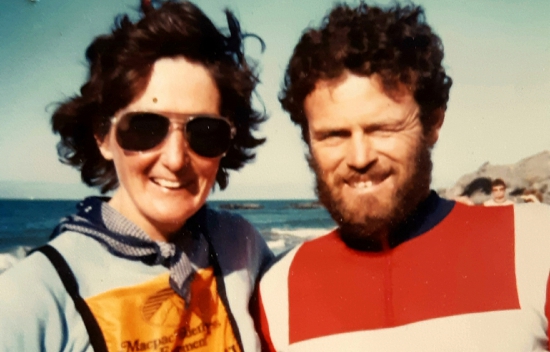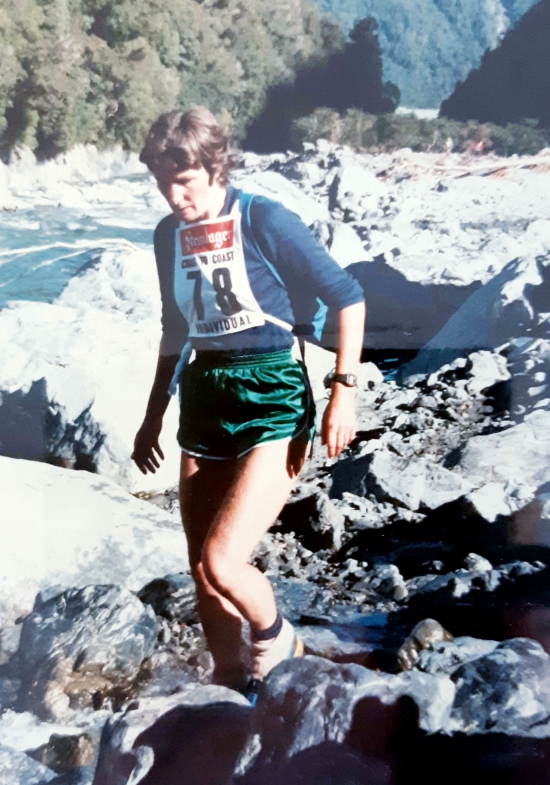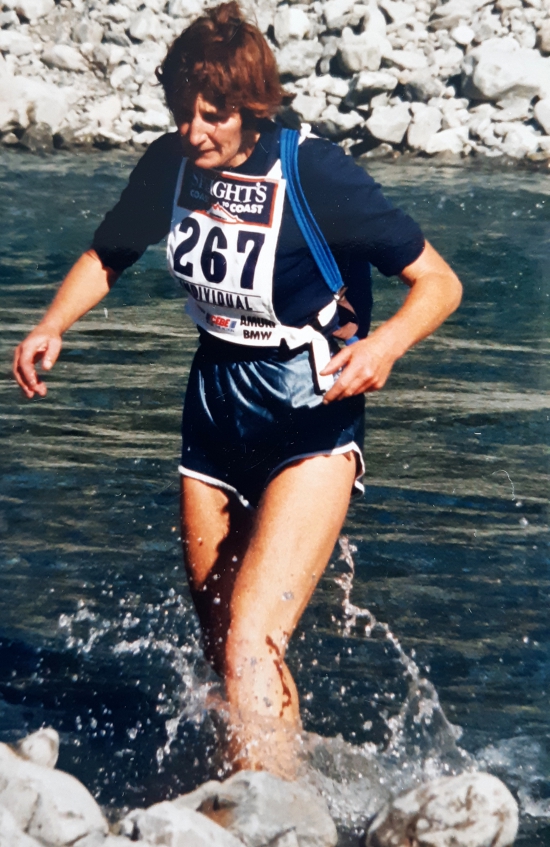40th Kathmandu Coast to Coast
The First Woman to Complete the Coast to Coast
Press Release / 09.02.2022


Anyone who makes it to the start line of the Kathmandu Coast to Coast has a great story to tell. The race attracts a certain type of person- the type of person who always sees endless possibilities. Of course, just getting to the start line in 2022 has proven to be a far greater challenge than anyone could possibly have anticipated.
In 1983, global pandemics were either distant memories for senior citizens, or plots in sci-fi movies for the contemporary generation. The whole concept of the Coast to Coast seemed a bit wacky with a challenge that on paper looked beyond the reach of most; with the exception of the hardy pioneering souls who stood on Kumara Beach waiting for the somewhat maniacal hairy figure of race creator Robin Judkins to fire off the starting hooter.
It’s fascinating looking through the 1983 start list, with many of those names going on to become iconic in Multisport, and others becoming well known as event organisers. Others parented children who have gone on to feature prominently in the race in later years. What is often lost in the wash when we look back at the early days, is that there were five very athletic women on the start line for the first race: Carol McDermott, Debbie Lee Whale, Annie Hope, Emma de Lacey and Stella Sweney.

Stella’s brother John was also a 1983 original, and he paid her $50 entry fee. “I couldn’t really turn that down, could I?” The pair were originally from the West Coast and Stella Sweney says the territory wasn’t too foreign for them with backgrounds in tramping and climbing. A history of Harriers running certainly provided a solid base as she learned to bounce from rock to rock in the riverbeds. Having always biked to school, the cycling stages didn’t seem too daunting, so the training was upped accordingly.
Kayaking was a whole different ball game. “We’d done a wee bit of kayaking in a canvas kayak on Lake Kaniere but not a lot more.” Living and working in Nelson at the time, Stella Sweney would head across to Blenheim where her brother was living to train on the Wairau River.
Despite the 1983 race being an enormous step into the unknown for everyone associated with the event, Stella Sweney’s background meant she wasn’t really daunted by what lay ahead. “I wasn’t scared of long days- I’d had 20-hour days in the mountains climbing peaks and things. It was just a matter of pacing yourself and it certainly helped that you could draft on the bike.”
Spending the night at Arthurs Pass after day one made the challenge seem a little easier, but Sweney admits she was unsure whether she’d be able to do the whole thing. She says she wasn’t really racing against the other women. “There was a lot of laughing and joking and we all just saw it as a big adventure. It was a magical idea.”
The concept of competing and winning came two or three years later. “In 1983 we had people with empty baby carriers on the backs of their bikes and some pretty ropey looking gear! Judkins was very charismatic and made it all a lot of fun.”
Stella Sweney finished the race more than two and a half hours ahead of the next best woman and followed through with victory again in 1984 and a third placing in 1985.
1987 was the year of the first ever Longest Day, and never one to shy away from a challenge, Stella again stood alongside her brother John on Kumara Beach. Just over 16 hours later, the pair were the last two home at Sumner Beach, with Stella being the first woman to complete the One Day Race. “I’ve never been as tired as I was at the end of that day, but it was very satisfying to do it.”
Along the way, Stella and John stopped to help 1986 women’s two-day winner Jane Reeves who had run into difficulties on the Waimakariri. “She fell out, so we stopped and made her safe on the riverbank. It was a long way into Christchurch and the race was certainly well named!”

Hand in hand with the Coast to Coast, the sport of triathlon was also taking off globally, with Christchurch’s Erin Baker busting down the doors on the international stage. Sweney admits she did feel like a pioneer in the first two or three years of the race. “Then it kind of caught on. There were skiing events too. So many people were going in it, and it was their first time at anything like it. They may not have even run a marathon.”
Sweney says the lack of experience in the fields brought about a lot of camaraderie. “Yes, there was the competitive element, but they were way out in front. The rest of us were just having a lot of fun, helping each other out with the river crossings - particularly when it was a bit in flood.”
Sweney believes Judkins hooked into a magical concept that captured the best of what the New Zealand outdoors is all about. “It’s not inherently dangerous, but it’s still adventurous. The thought of going from one side of the island to the other captured everyone’s imaginations.”
Back in the late 80s, the growing influence of the brewery sponsorship saw the event focus heavily on the men’s side of the event. “They wanted to make out that it was tough, but there were plenty of women who were doing it with ease. There were definitely many more males on the start line, but the women showed they were up for Multisport as well as anyone.”
Race Director Robin Judkins received a bit of criticism, but Sweney has no complaints. “Judkins gave out pretty good prizes for the women as well, so I didn’t feel we were underrated. There were more prizes for the men, but there were a lot more of them.”
A shift down to Timaru saw Stella Sweney eventually drift away from the event. “I was training to be a Mountain Guide and that was taking up a lot of my holidays.”
So many people who are attracted to endurance events tend to be high achievers in other areas of their lives. As a Coast-to-Coast pioneer, Stella almost helped write that template. A move to Tekapo saw her serving as Chair of the Local Community Board. However, it’s hard to imagine Sweney stuck behind a desk for too long, and mountain guiding provided her with an outlet even a little more extreme than Coast to Coast.
“Six times I think,” was Sweney’s almost slightly vague reply when asked how many times she’d summited Mount Cook. Stella Sweney learned the art of guiding from the best in the business. “Gottlieb Braun-Elwart was my brother-in-law. My sister Anne and Gottlieb started Alpine Recreation. He encouraged me to do the Guide training.”
Sadly, in 2008, Gottlieb died of an aortic aneurysm in the Alps while guiding Prime Minister Helen Clark and her husband Peter Davis. “That was when I made the move to Tekapo to help my sister out. Her daughter, my niece, Elke, is now a fully qualified guide and they’re running the company.”
These days, 75-year-old Stella is back living in Christchurch and remains as active as ever. When she’s not chasing the white ball around the Avondale Golf Course, she’s keeping busy organising cycle trips with her sister Anne. “We’ve done the Old Ghost Road and the Paparoas. Did the Wilderness Trail too: a mixture of cycling and walking trips.”
The Stand-up Paddle Board never has time to gather dust in the garage. “It’s great getting out on the water. Very peaceful. But I’ve probably been a little too ambitious going out in the surf a couple of times.”
Everyone who races Coast to Coast seems to retain their enthusiasm for the event years later. That still holds true for the first ever women’s winner. “I still get a bit twitchy every February, and I certainly keep an eye on it!”
See All Event Posts





